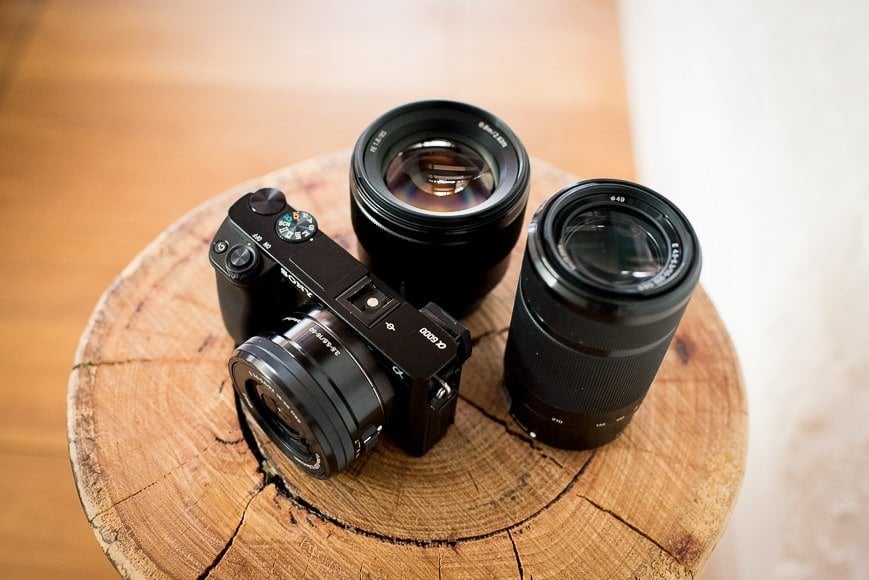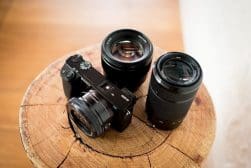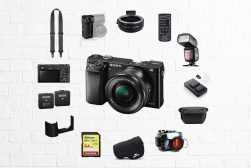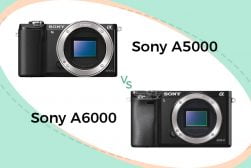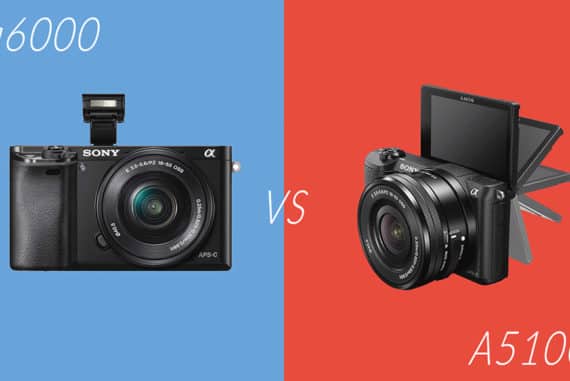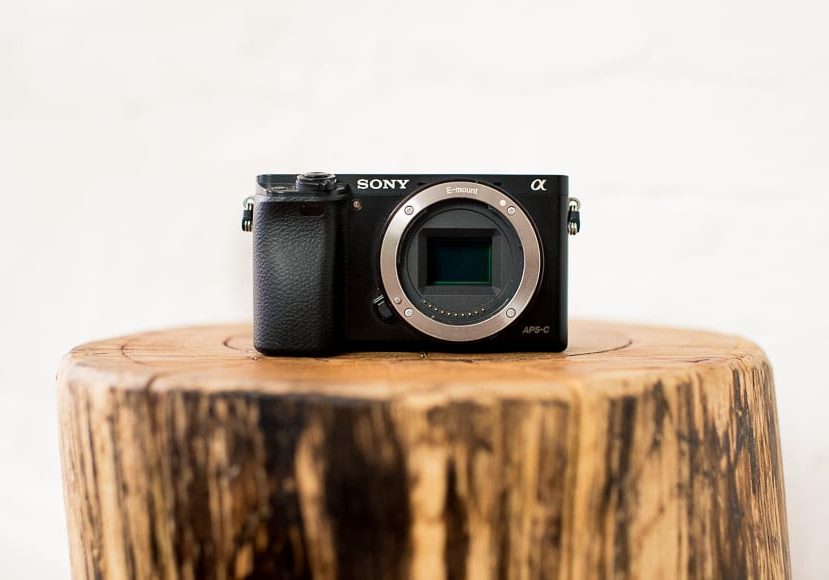
Sony Alpha a6000 Mirrorless Camera Review
The newest Sony a6000 review you're likely to read! A pro photographer puts the Sony a6000 to the test - Is it still the most popular mirrorless camera in 2024?!
Camera Reviews | Photography Gear Reviews | Sony Camera Reviews | By Mark Condon | Last Updated: January 24, 2024
Seeing a Sony a6000 review on a site like Shotkit may come as a surprise to some of you, especially here in 2024.
On its 9th anniversary, why have I decided to write a review of a mirrorless camera which has been superseded twice since the Sony a6000 release date way back in April of 2014?
Thanks to my work with Shotkit, I have access to pretty much any camera – why on earth did I choose to spend a month shooting with an entry-level camera and three outdated Sony lenses?!
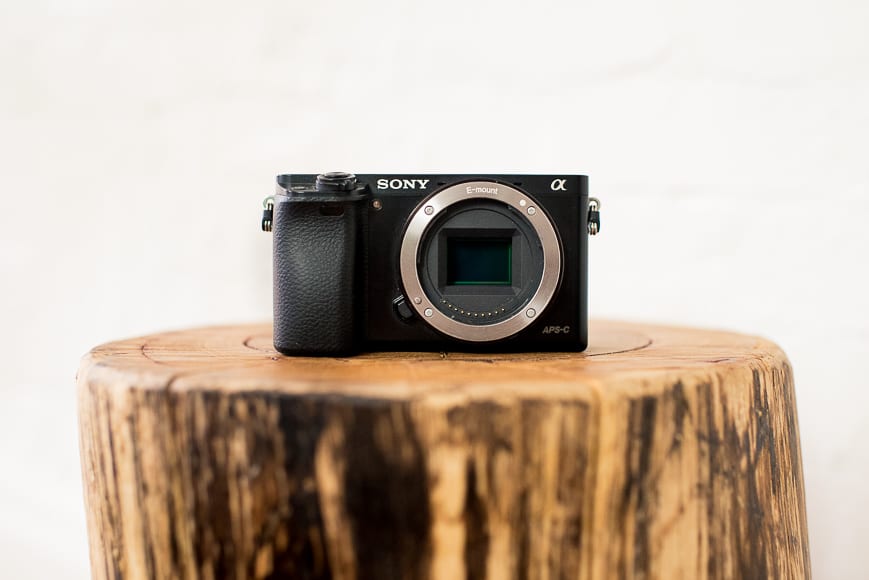
Incredible value for money compact mirrorless camera with lightning fast shooting and autofocus performance, and great image quality.
Hopefully, this in-depth review of the world’s best-selling mirrorless camera will make things a little clearer.
It’ll also be a good reminder that getting a great camera needn’t mean spending lots of money on the very latest model.
So, enough of the preamble. Get a cup of tea, as this is a long one ;-) Let’s jump right in!
Sony a6000 Review Summary
This impressive compact camera features a 24.3 MP APS-C CMOS sensor, BIONZ X image processor, 3-inch LED screen and 11fps continuous shooting, packed in to a lightweight body. Shoot up to 47 JPEGS, 22 RAWS, or 21 simultaneous JPEG + RAWS before the buffer slows. The a6000 is affordable, powerful & dependable.
Intro
- Incredible value for money
- Impressive AF and face tracking
- Solid build
- Great image quality
- The Sony a6000 flip screen and EVF could be better
- Cluttered interface
As I mentioned before, it may seem a little odd to be writing a review of the Sony a6000 in 2024, several years after its release.
5 years in technology is a long time, and there are many photographers who wouldn’t even consider a camera that’s 1 year old, let alone 5.
The reason why I put together this a6000 review was to see whether the most popular mirrorless camera is still relevant today.
Despite all the advancements in technology since its release, is it still to wise to invest in the Sony a6000?
You can compare the specs with newer models all you want, but the only real way I was going to give you an honest recommendation was to shoot solidly with this camera for a month… so that’s what I did!
I’ve included sections below that compare the a6000 with its two successors, but what was more important to me was the performance of this camera on its own, i.e. not compared to newer cameras.
Specs
- 24.3 megapixel APS-C CMOS sensor
- Bionz X image processor
- Hybrid AF system with 25 contrast-detect and 179 phase-detect points
- Built-in flash + Multi-Interface Shoe
- ISO 100-25600
- 11 fps continuous shooting with subject-tracking
- 3-inch tilting LCD with 921,600 dots
- OLED electronic viewfinder with 1.44M dots
- Diffraction correction, area-specific noise reduction, and detail reproduction technology
- Full HD video recording at 1080/60p and 24p; clean HDMI output
- Sony a6000 video recording limit of 30 minutes
- Wi-Fi with NFC capability and PlayMemories App
- Sony E-Mount Lens compatibility
- 4.72W x 2.63H x 1.78D in.
- 10.05 oz (Body Only) / 12.13 oz (With battery and media)
If you’re like to read more specifics about the camera, click here for the Sony a6000 manual.
Build & Handling
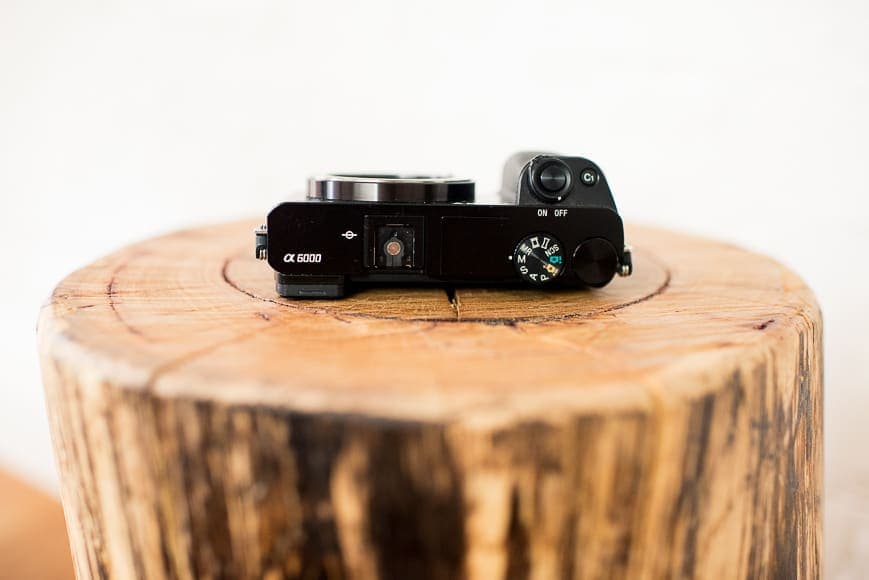
The worry with most entry-level mirrorless cameras at this price point is that build quality suffers, but thankfully this is not the case with this one.
The metal body feels solid, and offers an ideal weight for a camera of this size. I particularly like the rubber grip, which protrudes just enough to allow my big hand to get a firm, comfortable hold, whilst still letting my thumb rest in a natural position to change most settings one-handed.
Good ergonomics are a hugely underestimated feature on compact mirrorless cameras. It’s all well and good having a camera as thin as a deck of cards, but unless you can hold it comfortably and safely whilst still being able to operate it one-handed, you may as well stick to your iphone!
The dials on the a6000 stayed firm and clunky during the one month that I shot with it every day – I initially thought they were a tad too stiff, but after getting used to it, I grew to like their solid feel.
I also liked the way that you couldn’t ‘bump’ your settings by mistake when carrying the camera, since the dials wouldn’t budge unless you twisted them yourself.
The rotating wheel on the back of the a6000 is reminiscent of Canon DSLRs, and provides fast and easy access to a range of options within the camera’s menu.
I set it up to control exposure compensation, so I could leave the camera on Aperture priority with Auto-ISO engaged, and just turn the dial to add or remove light.

a6000 + 55-210mm f/4.5-6.3 | 1/320 at f/6.3 ISO 2500
Something I found a little unusual was the LCD screen, which has a 16:9 ratio, more suited for video playback – when viewing standard 3:2 stills, you’re left with black bars on either side of the frame.
The screen can tilt upward 90 degrees and down by 45, allowing for some creative shooting angles.
The resolution is 921,600 dots, which sounds impressive but isn’t so special here in 2024. It’s adequate for viewing images and taking photos, but don’t expect to be blown away by the resolution.
The EVF quality is similarly ‘just OK’ – adequate for shooting and reviewing images, but there are obviously much better quality electronic viewfinders on mirrorless cameras in 2024.
Did I find the EVF restrictive in any way? No. Would I prefer a more detailed EVF with a wider view? Definitely.
From switching on the a6000 to being ready to shoot, the wait is no longer than any DSLR costing 10x the price.
Startup time on cheaper cameras is usually around one second, and can be a huge annoyance over a day’s shoot – not so with the Sony.
I liked the option to swap the Aperture and Shutter Speed controls in manual mode – something that’s often overlooked in cameras at this price point.
Whilst the Sony a6000 has been priced to appeal to beginners, (and is actually in my opinion one of the best cameras for beginners), it’s clear that Sony intended its use to be relevant to more experienced photographers, and dare I say it… to pros too?!

a6000 + 85mm f/1.8 FE | 1/250 at f/1.8 ISO100
The Sony a6000’s buttons are all dedicated to single functions, which makes operation very simple, with little need to start delving into the somewhat convoluted menu.
You can change settings quickly by using what Sony calls the Quick Navi screen, accessible via the DISP button. Here you can choose from all the main shooting options by pressing the Fn button and navigating around the page using the dial.
Spending some time setting up the a6000 reaps dividends later on – I found that after I’d set up the Custom Menu with my ‘fairly often’ used functions, then assigned the 2 dedicated custom buttons to my ‘most used’ functions, I didn’t need to delve into the main menu much at all.
It’s a bit of a shame that Sony decided to cram so many icons around the buttons and dial on the rear of the a6000. I found operation of the camera far simpler than the mess of icons suggested!
There’s a lot to be said for an uncluttered camera interface, much like an uncluttered desk – unfortunately, Sony never seems to get this quite right.
Aesthetics aside, I found the a6000 a pleasure to shoot with. Once muscle memory had kicked in and I was able to find the buttons to change settings without having to glance at the back of the camera, I was able to concentrate fully on my scene.
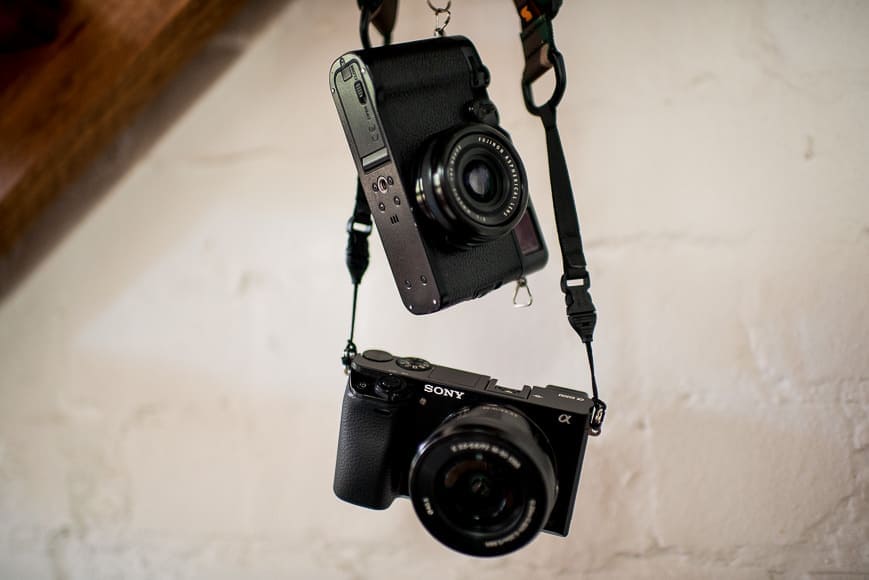
Sony a6000 vs Fujifilm X100F | As long as you choose your Sony e mount lenses wisely, the a6000 is one of the smallest mirrorless inter-changeable lens (M.I.L.C.) cameras.
The tiny 16-50mm power zoom (available in the most popular Sony a6000 bundle) is great fun to use and makes the a6000 super portable – see the image above.
The electronic ‘power zoom’ feels just as responsive as twisting a manual zoom ring would be.
However, being a relatively cheap ‘kit-lens’, the image quality out of the 16-50mm doesn’t really do justice to the full capabilities of the sensor. The Sony a6000 with 18-135mm kit does offer more focal length flexibility, but there are still better lens options out there.
Check out the lenses I recommend for the a6000 later on in this review for some much better options.
If I had to single it down to one factor that added the most enjoyment of shooting with the a6000, that would have to be its incredible auto focus… so let’s look closer at this now.
Auto focus
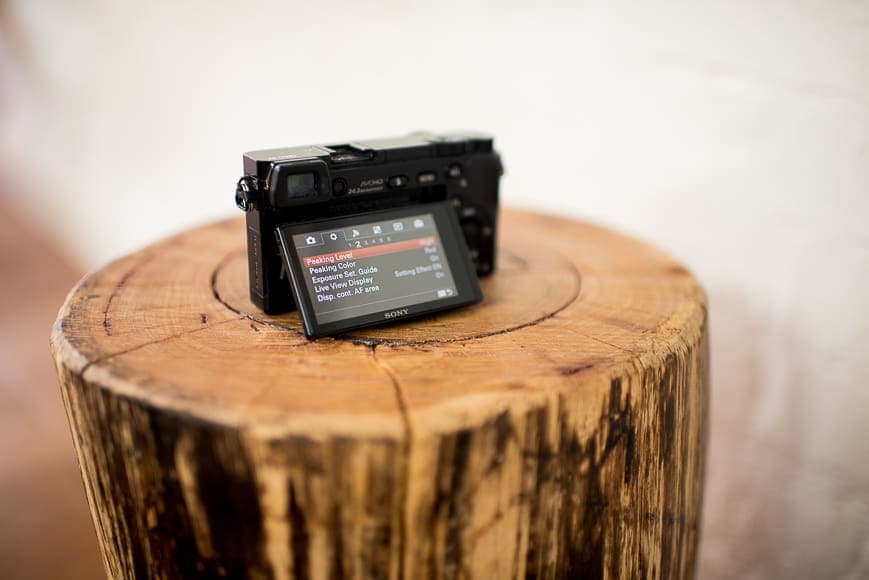
When I shot with the Sony a6000 on the first day, I was convinced I wouldn’t like it. My pet peeve with entry-level cameras is not being able to select the AF point ‘directly’, i.e. you can’t press just one button to move the AF point.
This was my biggest dislike of Fuji’s early X100 cameras, until they addressed the issue with more recent models.
Having to first press a button to engage manual focus point selection before being able to move the focus point could have been a deal breaker for me on the a6000… had it not been for this camera’s incredible ability to predict which focus point you want to use, particularly when there’s a face involved.
As soon as a subject enters your scene, the camera uses some kind of voodoo magic to find its face immediately, then lock on to it with incredible precision!
If there’s no face in the scene and you half press the shutter button, the a6000 locks on to the closest object.
If it gets the focus point you had in mind wrong, you just need to release the shutter button, then try again – I found that 9 times out of 10 the camera was able to guess correctly what I was trying to focus on if it got it wrong the first time.
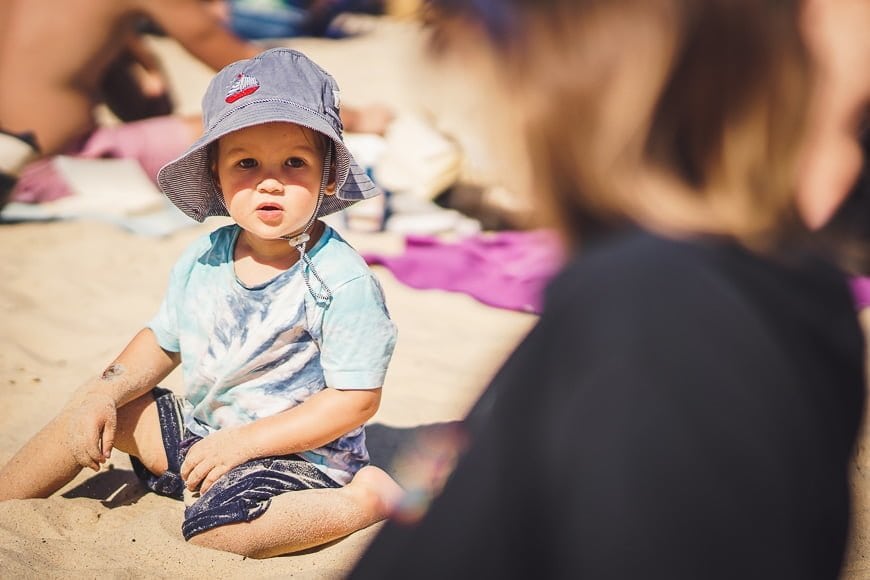
a6000 + 85mm f/1.8 FE | 1/4000 at f/1.8 ISO 100
The hybrid auto focus system means that the camera is intelligent enough to switch from single shot (AF-S) to continuous auto focus (AF-C) and back again, without your intervention.
In practice, this means that with Automatic AF (AF-A) engaged, I could lock focus on to one of my children when he was standing still, then as soon as he turned and ran, the camera would switch to continuous AF mode to capture him in movement (then return to AF-A).
I wouldn’t normally use an AF-A mode on any of my other cameras, since I like to focus and recompose, and this is usually ineffective with AF-A.
However I found that with the a6000, I relied much more heavily on the camera choosing all my focus points for me automatically.
Face recognition on Sony mirrorless cameras has always been nothing short of mind blowing, and the this camera is no different. Not only does it track faces even faster than a human eye, but you can also set it to memorize up to 8 faces so that the camera tracks them in an order you choose.
I found this a little gimmicky at first, but soon realised that it’s actually a really useful function when trying to capture one person in the middle of a group of people (and you want to ignore the other faces).
Examples of this could be at your child’s nativity play when your pride and joy is surrounded by random kids, or during a wedding when you want to focus on the bride among all the guests.
Check out the video below which illustrates how well this function works, and how you can override the camera’s face detection on the fly so you have complete control of the AF point.
As you can see, if you take the time to set up the face registration feature, it’s a hugely effective way of allowing the camera to do all the hard work ‘picking out’ the correct faces from the crowd.
Sony placed great emphasis on the focusing speed of the a6000 when it was released, calling it the fastest autofocus in the world.
Whilst it’s hard to confirm this 4 years down the track, what I will say is that the AF on the a6000 is very impressive.
I usually shoot weddings with a Nikon D750, a DSLR 4-5x the price of this little a6000, and I have to say that the AF on the Sony is actually faster (in good light at least).
0.06 seconds for the a6000 to lock on to a subject is faster than many other mirrorless cameras, even here in 2024!
Burst mode shooting in continuous high mode is great fun. This pocket powerhouse able to fire off 11 frames per second for around 22 frames in RAW format, and 49 frames in JPEG Fine format.
Unlike the Sony a6300 and a6500, the a6000 doesn’t offer silent shooting, meaning that using burst mode is a bit like shooting with a muffled machine gun!
179 phase-detect AF points are spread across almost 100% of the frame, meaning that the a6000 can track your subject running across the scene, and closer/further away from you without missing a shot.
Watching the focus points track a subject like some kind of futuristic missile lock-on is incredible, and you forget that you’re using technology that should be considered ‘old’ in the 4 years since this camera’s release.
Check out how adventure sports photographer Chris Burkard takes full advantage of the a6000’s auto-focus tracking features in the video below:
Despite the its incredible burst mode performance which can outperform more expensive cameras, the speed at which this camera can write those photos to your memory card is a little lackluster – in a continuous 30 shot burst of RAWs, I found I was waiting around 10 seconds before the Play button would allow me to review any of the images.
Whilst the camera is ‘locked up’, you can’t enter any of the menus or playback mode, but you can still continue shooting (albeit slower), so it’s not all bad.
Using different lenses gave me different results from the a6000’s continuous AF tracking, but I found that in general, it did an amazing job of keeping a subject in focus throughout the 11 frames per second.
Using ‘Zone’ or ‘Wide area’ modes, I simply half pressed the shutter button to see that the camera had chosen the correct AF point (9 times out of 10, it had!); then fully pressed it down when the subject started moving.
It’s so entertaining to see the camera’s AF points track the subject throughout the frame, with the burst mode shooting off frame after frame in a flurry of semi-silent clicks!
As someone who usually prefers to select AF points manually, I found the automatic focus point selection of this impressive camera eerily intuitive and accurate.
Coupled with the mind-blowing continuous AF performance and class-leading 11 fps burst speed, photography with the a6000 is a hugely refreshing and altogether highly enjoyable experience.
Image Quality

This is where things start to get really interesting. As soon as I saw the images appear on the rear LCD screen of my a6000, I must admit I wasn’t expecting much in the way of stellar image quality.
As mentioned before, the LCD screen (and EVF), don’t really offer much in the way of high resolution, so it’s easy to assume the photos you’re taking won’t look good when enlarged on your computer monitor, or transferred to a smart device.
(Incidentally, wifi and NFC transfer via Sony’s smartphone app worked well, and is a simple way to get your photos onto a phone or tablet.)
However, when I finally got around to transferring my images from the a6000 to my computer, I couldn’t believe just how good they looked.
If you’re someone who wants to shoot in JPEG to minimise any time spent editing your photos, I think you’ll be very happy with the images out of this camera.

a6000 + 55-210mm f/4.5-6.3 | 1/320 at f/6.3 ISO 1600
The 24MP Exmor HD CMOS sensor with Bionz X processor ensures JPEGs are sharp, vivid and contrasty, but not overly so.
Sony’s Dynamic Range Optimization feature helps to get a well-balanced image that makes full use of the camera’s impressive ability to handle highlights and shadows.
I spent most of my time shooting in RAW so I could test the full abilities of the files out of the a6000, and I must say that I was pleasantly surprised.
You can check out DP Review’s highly technical analysis of dynamic range performance here if you need some bedtime reading, but take it from me, the Sony’s files offer from an APS-C sensor.
24 Mega Pixels is also a great sweet-spot in resolution, where files aren’t so big as to necessitate huge memory cards, but still offer enough wiggle-room for some high quality crops.
ISO performance was pretty good for a high-megapixel APS-C sensor, with similar results to the Nikon D3400 review I wrote recently.
I found the best image quality was under ISO400, with noise being introduced to the image soon after this, but it was only apparent when zooming in to really inspect it.
As you can see in my image below shot at ISO 3200, you can’t see any noise at all.

a6000 + 55-210mm f/4.5-6.3 | 1/320 at f/5.6 ISO 3200 | When viewed at normal sizes, ISO 3200 looks great!
The Sony a6000 has a cute pop-up flash which you can use in a pinch when the light becomes really low, but I’d still prefer to crank the ISO up higher for a noisier image over the crappy deer-in-headlights look produced by these small on-camera flashes!
Overall, the Sony a6000 image quality is superb, especially when you consider the bargain price of this camera.
As with all cameras, you’ll need to pair this one with some good glass to really get the best image quality out of the sensor.
Whilst I found the power zoom convenient and fun to use, shooting with a prime lens such as the Sony 85mm f/1.8 FE really brought the image quality up to professional levels. The Sony 55-210mm f/4.5-6.3 was also quite impressive, but only really useful during the day time, or in adequate light.
Video
This being a stills photography review, I don’t feel qualified to speak much about the Sony a6000 video performance.
Check out the video review above for a better idea of what this camera is capable of in the right hands:
What I will say is that the a6000 offers complete manual control over exposure settings during video recording, which is sure to please video shooters.
I also liked the ability to shoot videos in manual mode, but still being able to select Auto-ISO. This means you can have creative control over aperture and shutter speed for the look and feel of the video, whilst letting the camera choose the appropriate ISO to maintain the correct brightness.
Much like the auto focus for photos, the AF for video was similarly impressive. I didn’t experiment much with the myriad of AF modes available during video, but I found the tracking fast and accurate, and left me to just concentrate on keeping the subject within the frame.
While you might not be able to use the Sony a6000 for filmmaking, it’s video features still hold up if you’re on a budget.
- How to change shutter speed on a6000
- Set the a6000 to manual mode by turning the mode dial on the top of the camera to “M.”
- Press the “Fn” button on the top of the camera, then use the navigation buttons on the back of the camera to select the “S” (shutter speed) option.
- Use the main control dial on the top of the camera to adjust the shutter speed. Turn the dial to the right to increase the shutter speed or to the left to decrease it.
- You can also use the exposure compensation dial on the top of the camera to fine-tune the exposure if necessary.
- As you adjust the shutter speed, keep an eye on the exposure meter in the viewfinder or on the LCD screen to ensure that the exposure is correct.
Price
Finally, we come to the strongest draw card – the Sony a6000 price!
One of the huge benefits of buying a slightly older camera is being able to take advantage of massively reduced prices.
When the camera was released in 2014, it cost around $800, which I still consider to be a great price for a camera offer this much technology and high image quality in such a compact body.
Here in 2024, the price of the Sony a6000 starter kit has dropped to around half this, making it the best value mirrorless camera!
My preference after testing a few lenses would be to buy it ‘body only’, saving an additional 150-ish bucks over buying it with the 16-50mm power zoom.
Whilst I did find the power zoom fun and loved how compact it made the overall camera, there are much better Sony a6000 lenses, and I’d prefer to put the money saving towards one of these.
Final word – I still can’t believe you can get so much camera for so little money – it’s without a doubt the best mirrorless camera under $500, and a camera I’d happily recommend to my friends who want the biggest bang for their buck here in 2024.
(Budget still too tight? check out the best digital camera under $200)
Sony a6000 vs 6300
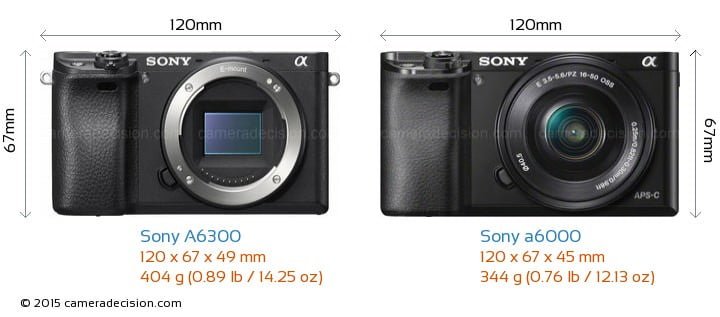
It’s only natural for photographers to want the latest camera gear. After all, ‘newer’ normally means ‘better’, but is that really the case with the Sony a6000 vs a6300 mirrorless cameras?
2 years after the release of the a6000, the a6300 hits the scene, touting a ‘newly developed image sensor’, better viewfinder, 4k video recording, more AF points and a more rugged body. You can also use a wider range of the Sony A-mount lenses on the a6300, with tracking and auto-focus working on the newly developed E-mount.
So on paper, all looks pretty good… but remember that the a6300 is around twice the price of the a6000.
For video, sure 4k is great to be able to crop after the fact, and additional focus points are helpful when tracking a subject all the way across the frame.
However, for stills photography, most people agree that the a6300 isn’t significant enough of an upgrade to warrant the price increase over the a6000.
So, in the a6000 vs a6300 battle, I’d recommend you stick with the a6000 and use the money you save to invest in some great lenses instead.
Sony a6000 vs a6500
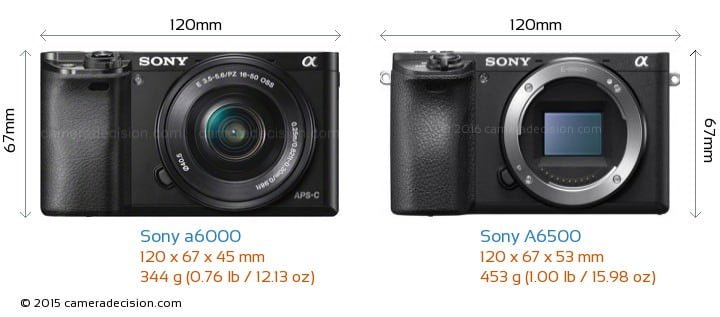
To confuse matters even more, Sony decided to release the a6500 soon after the a6300. The logical comparison might be the two most recent cameras, but in this case I think it’s more appropriate to pit the Sony a6000 vs a6500.
Both cameras still offer that incredible 24MP sensor and 11 fps continuous shooting in a compact mirrorless body. The a6500 has that improved image sensor of its predecessor, so is cleaner at high ISOs, but not remarkably so.
Then there’s the 5-axis image stabilisation in the a6500, which can help shooting handheld with slower shutter speeds, especially when using lenses on the a6500 which don’t feature image stabilisation. This is also good for video shooters.
The improved image processor in the a6500 also means that you can shoot even more images one after the other, and the camera will process them quicker (meaning the camera won’t be ‘locked up’ writing files to the memory card after shooting a series of images in quick succession).
My favourite feature of the a6500 is the touchscreen and touch-to-focus capability. Unfortunately, the a6000 isn’t a touchscreen camera.
However, is the a6500 worth three times the price of the a6000? I don’t believe so unless perhaps you’re a video shooter.
For stills photography, I think that the price:performance ratio of the a6000 when compared to the a6300 and a6500 still makes it the clear winner.
At this price point, there simply isn’t a better mirrorless camera than the a6000.
[Related: Sony a7ii vs Sony a6500]
Sony a6000 vs Other Popular Cameras
It’s been a few years since the Sony a6000 was released. This means that there is more competition than ever for the spot that this camera takes in your photography kit.
The Sony a6000 has to compete with today’s budget-friendly options, yesterday’s high-end models, and even new smartphones.
Here’s how the Sony a6000 shakes down when compared to a few popular choices.
Sony a6000l vs a6000
The Sony a6000 in the Sony a6000l are actually the same camera. The only real difference here is that the a6000l comes with a kit lens whereas the a6000 is just the camera body itself.
The Sony a6000 has been out for a while now, so it might be a little tricky to find a kit that’s still fully intact, but you can easily pick up any of the kit lenses available for this camera at a considerable discount.
Sony a6000 vs Canon 7d
The Sony a6000 and the Canon 7D are remarkably close cameras. even though it’s a neck-and-neck finish, the Sony a6000 does come out a little bit ahead.
The Canon 7D is a DLSR which means it’s also much bigger and heavier than the Sony a6000. Despite the larger size, the photo and video capability of both of these cameras are almost the same with the Sony a6000 being slightly ahead.
One of the clearest differences between these two cameras is the price tag. Today, you can pick up a Canon 7D for about half the cost of a Sony a6000.
Ultimately, this decision is going to come down to cost, weight, and if you already have lenses for either Canon or Sony cameras.
Sony a6000 vs iPhone 14 Pro Max
The Sony a6000 has always been in competition with the latest pro model iPhone. After all, an entry-level mirrorless camera and a high-end smartphone are both great options for mastering photography 101.
The Sony a6000 wins hands down when it comes to cost. It’s a fraction of the price of the latest iPhone.
The photo quality debate between the Sony a6000 and the iPhone 14 Pro Max is an interesting contest.
The iPhone 14 Pro Max is a bit easier to use, and it means you don’t have to haul around another camera if you’re just interested in taking quick pictures or learning the basics.
The Sony a6000 is more ideal if you’re interested in learning the ins and outs of being a photographer. It also produces real bokeh rather than a digital effect bokeh which means overall more professional-looking images than the iPhone can deliver.
Sony a6000 vs Fujifilm x-t200
The Sony a6000 has been out for a long time now, and that means it’s not going to win every head-to-head battle it has.
The Fujifilm X-T200 is a better camera in almost every respect. It can shoot 4K video and the images it produces look a little bit more filmic and natural than the Sony a6000.
The only category where the Fujifilm camera lags behind is weight. It’s noticeably bulkier than the Sony a6000, which might make it a less desirable pick if you’re looking for something you can throw in your everyday bag.
Canon 250d vs Sony a6000
Comparing the Canon 250d versus the Sony a6000 is a true tie.
The Sony a6000 has some features that stand out, including more frames per second, an easier-to-use design, and the lightweight form factor of a mirrorless camera.
The Canon 250d has a built-in microphone port, much more impressive battery life, and a notably higher bit rate when recording video.
I’d say the Canon 250d is the better of the two if you’re more interested in filming video, and the Sony a6000 wins out if photography is going to be your main focus.
Accessories
For such an immensely popular mirrorless camera, it’s no surprise that there are some great Sony a6000 accessories available in 2024.
Since this most recent bargain price makes it such an accessible camera for beginners, most people are left with enough spare change to pick up some useful accessories. Let’s take a look at the most popular:
Lenses
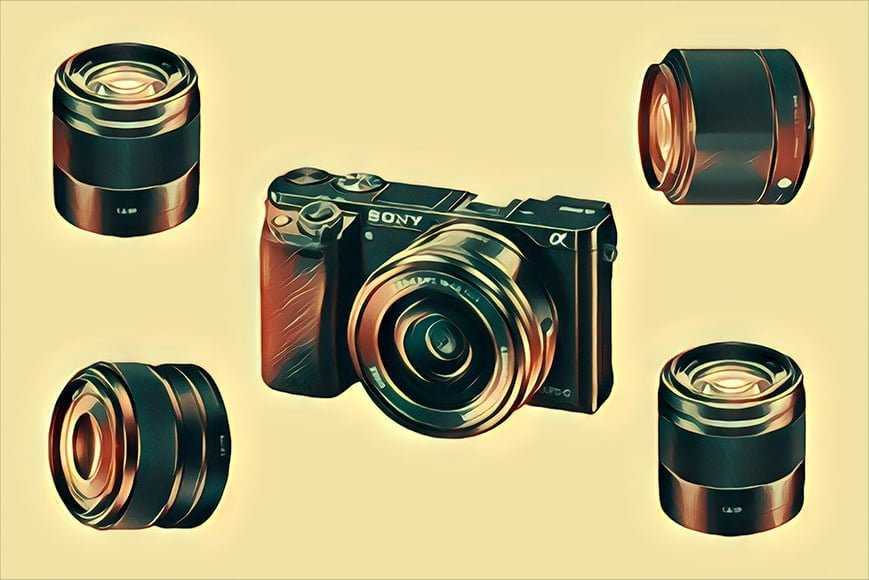
I wrote a whole article discussing what I considered to be the best lenses for the Sony a6000, so I won’t repeat myself here.
If you don’t have time to read the whole article, here are 4 of my favourite lenses:
You’ll notice that the Sony a6000 wide angle lens I recommend there is actually by a brand called Rokinon.
It’s a great, affordable option if you want to shoot really wide angle, but note that it’s manual focus only.
Recommended Camera Bag

Peak Design Sling 5L is a great size for camera bag for a6000 owners with 2 zooms and a small prime lens.
My recommendations of a camera bag for the a6000 would be something compact and lightweight, with room for a spare battery, some cards and a couple of lenses.
The Peak Design Everyday Sling is my top pick for a Sony a6000 camera bag. If you only have a couple of small lenses, the 5L version is perfect.
It looks great in all 3 colour options, and is designed with lots of features you never even knew you needed – I love the small organisation options inside the pockets in particular.
If you prefer a camera messenger bag over a sling, I’d go for either the well-priced LowePro Event Messenger 100, or the Think Tank Mirrorless Mover (5 or 10, depending on the number of lenses you need to carry).
You should also check out my guide to the best camera backpacks here.
Battery
Not such a sexy accessory for this camera by any means, but I’d advise you to stock up on a few spare batteries so you can keep shooting all day without worry.
I wouldn’t normally recommend third party batteries for cameras, but in this case, there is a great alternative to the official Sony a6000 battery, by the well-known brand RAVPower.
The RAVPower FW50 offers two high quality battiers for the a6000 plus a USB compatible charger, all for under $30!!
Since the whole unit plus batteries weighs less than a pack of cards, you can keep it in your bag attached to a portable USB charger, meaning you’ll never run out of power whilst on holiday.
The Sony a6000’s usb charging and lightweight design make it a great travel camera setup for those who won’t have access to a power point for long periods.
Battery Grip
Another option to get more shots out of your camera is a third party Sony a6000 battery grip. My pick of the bunch is this Neewer Battery Grip, which includes a remove control. I have several Neewer products and they’re all decent quality for their bargain prices.
Although it may seem odd to add something to your a6000 which makes the compact form factor much bulkier, a battery grip can make it much more comfortable to hold for long periods, especially if you use longer lenses.
As well as improved battery life and better ergonomics, a battery grip also allows for much easier portrait orientation shooting, thanks to additional buttons and dials which are located in convenient spots when holding the camera vertically.
Isn’t it great to have some many affordable Sony a6000 accessories?! Typically, the more expensive a camera gets, the more expensive become its peripherals, so it’s refreshing to be able to take advantage of bargain prices with the a6000 add-ons.
Screen Protector
They’re cheap and protect your precious camera’s screen – enough said… just get one! Here’s my pick of the bunch.
UPDATE: since writing this review I came across a Sony a6000 bundle which includes the two lenses above, a memory card, mini travel tripod, filters, a bag… basically a whole heap of accessories that you may or may not need!!
However, since it’s the same price as the other lens only bundle, I figured you may as well get it – I wrote a full review on the bundle here.
Frequently Asked Questions
Is Sony a6000 a good camera?
Yes, despite being over 5 years old, it’s still a great camera. It’s also excellent value for money, and loved by many professional photographers as well as beginners and amateurs too.
Is the Sony a6000 discontinued?
Sony rarely discontinues its cameras, despite launching new bodies almost every year. As such, you can still purchase one from all major camera retailers.
Is the Sony a6000 a professional camera?
It features a 24.3MP APS-C-sized Exmor APS HD CMOS sensor with BIONZ X image processor, as well as an array of pro-grade features. Many professional photographers use it for their work.
Is the Sony a6000 still worth it in 2024?
Yes, definitely! It’s as much a bargain for the money today as it was in 2014 when it was first released.
What type of camera is the Sony a6000?
The Sony a6000 is an APS-C mirrorless digital camera. The crop sensor camera is a great choice for entry-level digital SLR photography even so many years down the road.
How to take the best pictures with Sony a6000 cameras?
The Sony a6000 is perfectly capable of creating professional photographs. You should try to keep the ISO below 3,200, use a tripod, and upgrade the lens if possible to get the best images out of this camera.
How to take the best pictures with a Sony a6000?
Use Aperture Priority mode and don’t exceed 3200 ISO to minimize noise.
Does the Sony a6000 have image stabilization?
No, the Sony a6000 doesn’t have image stabilization.
Does the Sony a6000 have IBIS?
No, the Sony a6000 doesn’t have In-Body Image Stabilization or IBIS.
Is the Sony a6000 good for filmmaking?
No, the Sony a6000 isn’t the best candidate for filmmaking, especially for professional use.
Does the Sony a6000 have Bluetooth?
No, the Sony a6000 doesn’t have Bluetooth. It isn’t available via updates either.
How to update a6000 firmware?
Updating a6000 firmware requires several steps explained in detail at Sony’s official website.
Where is the movie button on the Sony a6000?
You can find the Sony a6000’s movie button on the right-hand side of the camera. Red is its color.
Is Sony a6000 waterproof?
No, the Sony A6000 isn’t waterproof. It doesn’t claim to have any water sealing either.
What type of camera is the Sony a6000?
The Sony a6000 is a mirrorless digital camera.
Sony a6000 Review | Final Words
Due to time constraints, I haven’t had a chance to go through all the thousands of images I shot during the one month for this Sony a6000 review.
When I find time, I’ll upload some more so you can have a better understanding as to what’s capable with this incredible little camera.
Whilst I don’t usually recommend cameras based solely on their price, it’s hard to ignore just how much functionality you’re getting from the a6000 for such a bargain price.
Any small niggles I had whilst shooting with the a6000 were completely justified when I considered that the whole camera cost less than any of my DSLR lenses!
I thought it would also be very apparent to me that I was using a camera released several years ago when writing this review.
However, I honestly thought I was shooting with a very modern camera. Sure, the rear LCD and EVF have been improved in later models, and additional AF points and faster processing may be nice for some, but I was altogether satisfied with the performance.
I loved leaving the camera to select the AF point (and subject’s face), and track it across the screen automatically. In this way, I was able to keep up with my fast moving kids simply by keeping them inside the camera’s viewfinder frame – a huge time (and sanity!) saver.
Image quality was great, although I must say, not quite on par with the Fujifilm X cameras I’ve used in the past. However, the Fujis are usually much more expensive, so this is completely justified.
Overall, I found the Sony a6000 a fun and rewarding camera to shoot with.
At under $500, it really is unbeatable, and I wouldn’t hesitate to recommend it to both beginners and more advanced photographers looking for an affordable compact camera with great performance.

Incredible value for money compact mirrorless camera with lightning fast shooting and autofocus performance, and great image quality.





